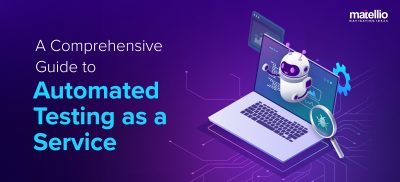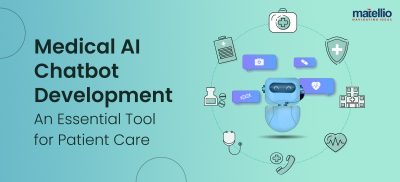
In the rapidly evolving digital era, businesses face mounting pressure to keep up with technological advancements while maintaining operational efficiency. The growing complexity of IT systems and the escalating demands for improved performance and scalability make it imperative for organizations to modernize their outdated legacy systems. Legacy system migration is the key to unlocking these advancements. By transitioning from old, inefficient systems to modern, agile infrastructures, businesses can enhance productivity, reduce costs, and pave the way for innovative solutions.
What is Legacy System Migration?
Legacy system migration involves moving data, applications, and business processes from outdated IT systems to newer, more efficient technologies. This process is crucial for organizations looking to modernize their IT infrastructure, improve operational efficiency, and remain competitive in their industry. Migrating from legacy systems can involve transferring data to new platforms, upgrading software, or completely overhauling existing IT frameworks. The goal is to enhance performance, reduce costs, and increase agility.
Legacy systems often hinder innovation due to their outdated technology and limited capabilities. Migrating these systems to modern platforms can significantly improve an organization’s ability to adapt to market changes and technological advancements. Furthermore, modern systems offer better security features, ensuring that sensitive data is protected against emerging threats. Utilizing cloud migration services is an effective strategy for migrating legacy system. These services facilitate a seamless transition from legacy systems to cloud-based platforms, offering a flexible and cost-effective solution for IT modernization.
Why is Legacy System Migration Important?
Modernizing IT infrastructure through the migration of legacy system offers numerous benefits. Here’s why it’s essential:
 Enhanced Performance
Enhanced Performance
Newer systems are generally faster, more reliable, and more secure. This improvement translates to better productivity and user satisfaction, as employees and customers benefit from quicker and more reliable services.
 Cost Savings
Cost Savings
Reducing maintenance costs associated with outdated systems. Legacy systems often require specialized knowledge and frequent repairs, which can be expensive. Modern systems, on the other hand, are easier and cheaper to maintain.
 Improved Compliance
Improved Compliance
Modern systems are better equipped to handle regulatory requirements. They often come with built-in compliance features that help organizations adhere to industry standards and regulations, thereby avoiding costly fines and legal issues.
 Scalability
Scalability
Easier to scale and adapt to new business needs. Modern systems can handle increased workloads and can be scaled up or down based on the organization’s requirements, ensuring that the IT infrastructure grows with the business.
 Better Integration
Better Integration
Seamless integration with other modern technologies and systems. Leveraging AI development services from a reputable company can offer you expert guidance for designing new systems to work well with other software and platforms. It facilitates smoother operations and better data flow across the organization.
 Data-Driven Decision Making
Data-Driven Decision Making
Enhanced analytics capabilities for better business insights. Modern systems can process and analyze large volumes of data, providing valuable insights that help in making informed decisions.
 Increased Productivity
Increased Productivity
Automation of routine tasks frees up resources for strategic initiatives. Employees can focus on more important tasks instead of spending time on repetitive processes, leading to increased overall productivity.
 Enhanced User Experience
Enhanced User Experience
Modern interfaces and functionalities improve user satisfaction. New systems offer intuitive interfaces and advanced features that enhance the overall user experience, making it easier for employees to perform their tasks efficiently.
 Security
Security
Improved security features to protect sensitive data. Modern systems incorporate the latest security technologies to protect against cyber threats, ensuring that the organization’s data remains secure.
Also Read- Cloud Migration Strategy: Driving Your Business Growth
IT Transformation and Legacy System Migration
IT transformation and legacy system migration are intrinsically linked. IT transformation encompasses the overhaul of a company’s IT infrastructure to improve efficiency and meet new business demands. Legacy system migration is a critical component of this transformation. Through next-gen technologies such as artificial intelligence (AI), cloud computing, and machine learning (ML), businesses can upgrade their legacy systems to achieve higher performance, scalability, and security.
These technologies enable more seamless integration, robust data analytics, and automated processes, ensuring that the IT transformation is both comprehensive and sustainable. IT transformation through migration from legacy systems allows businesses to embrace digital transformation fully.
By integrating AI and ML, organizations can automate complex tasks and gain deeper insights from their data. Cloud computing offers scalable resources and flexible deployment options, making it easier to manage and expand IT infrastructure. This comprehensive approach ensures that businesses are well-equipped to meet future challenges and capitalize on new opportunities.
Legacy System Migration Strategy
A well-planned legacy system migration strategy is essential for a successful transition. Here’s a step-by-step approach:
Assessment and Planning
- Identify Objectives: It is vital to clearly define what you hope to achieve with the migration. Understanding the specific goals, such as improving performance, reducing costs, or enhancing security, will guide the entire migration process.
- Evaluate Current Systems: Assess the current IT environment to understand what needs to be migrated. This includes evaluating the existing infrastructure, identifying critical applications and data, and determining the readiness of these components for migration. You can consider leveraging the digital transformation services to gain deeper insights and ensure a comprehensive evaluation, ensuring that all aspects of your IT environment are prepared for a seamless migration.
- Stakeholder Involvement: Engage all relevant stakeholders to gather input and support. Involving key stakeholders early in the process ensures that their concerns and requirements are addressed, facilitating smoother implementation.
Choosing the Right Approach
- Big Bang Migration: All components are migrated at once, offering a quick transition but higher risk. This approach is suitable for smaller, less complex systems where the entire migration can be completed in a short timeframe.
- Phased Migration: Migrating in stages to reduce the legacy system migration risks and manage change more effectively. This method allows for gradual implementation, with each phase being tested and validated before moving on to the next, reducing the risk of major disruptions.
- Parallel Running: Running both old and new systems simultaneously for a period to ensure stability. This approach provides a safety net, allowing users to revert to the old system if any issues arise during the transition.
Data Migration
- Data Mapping: Identify data elements in the old system and map them to the new system. This process ensures that all necessary data is accurately transferred and that there are no gaps or inconsistencies.
- Data Cleansing: Clean data to remove inaccuracies or redundancies. Ensuring that the data being migrated is accurate and up to date prevents issues in the new system and enhances data quality.
- Testing: Ensure data integrity and completeness through rigorous testing. Conduct thorough testing to verify that all data has been correctly migrated and that it functions as expected in the new system.
Application Migration
- Rehosting: Moving applications to a new environment without changing code. This is the simplest form of application migration, often referred to as “lift and shift.”
- Re-platforming: Making minimal changes to leverage modern infrastructure. This may involve minor adjustments to optimize the application for the new environment.
- Refactoring: Rewriting parts of the application to fit new environments. This approach is more complex but can provide significant benefits by optimizing the application for modern technologies and performance improvements.
Post-Migration Activities
- Monitoring and Support: Continuously monitor the new system and provide support. Ongoing monitoring helps identify and resolve any issues that arise, ensuring the system remains stable and performs well.
- Training: Ensure staff are trained in the new systems after legacy system migration. Proper training ensures that users can effectively utilize the new system and that any productivity loss during the transition is minimized.
- Evaluation: Regularly evaluate the performance of the new system and make necessary adjustments. Continuous evaluation helps identify areas for improvement and ensures the system continues to meet business needs.
Wish to Transform Your IT Infrastructure by Migration of Legacy Systems?
Legacy System Migration Challenges and Solutions
Addressing legacy system migration risks is critical to ensure a successful transition. Here are some common challenges and solutions:
Data Complexity
Migrating large volumes of data can be complex and time-consuming.
- Solution: Implement robust data mapping and cleansing processes as part of legacy application modernization services to ensure accuracy and completeness.
Compatibility Issues
Ensuring new systems are compatible with existing infrastructure.
- Solution: Leverage legacy system migration services for integrating platforms and middleware to facilitate seamless connectivity and interoperability.
Downtime
Minimizing disruption to business operations during migration.
- Solution: Opt for phased migration or parallel running to ensure business continuity and minimize downtime.
Cost Management
Balancing the cost of migration with expected benefits.
- Solution: Develop a detailed budget and seek cost-effective solutions, such as leveraging existing resources and technologies where possible.
Security Risks
Protecting sensitive data during the migration process is one of the major legacy system migration challenges.
- Solution: Implement strict security protocols, including encryption, access controls, and regular security audits.
User Adoption
Ensuring staff are comfortable with new systems.
- Solution: Provide comprehensive training and support to facilitate user adoption and minimize resistance to change.
Performance Issues
Ensuring the new system meets performance expectations.
- Solution: Conduct thorough testing and continuous monitoring to identify and resolve any performance bottlenecks.
Facing challenges in legacy system migration?
Future Trends in Legacy System Migration
The landscape of legacy system migration is continuously evolving. Here are six trends shaping its future:
Automation
Automation tools are becoming more sophisticated, enabling faster and more reliable migrations. These tools can handle repetitive tasks, reduce errors, and speed up the migration process.
Cloud Migration
Migrating to cloud-based platforms offers enhanced flexibility, scalability, and cost-efficiency. Cloud migration for legacy systems provides on-demand resources and advanced capabilities, making them ideal for modernizing IT infrastructure.
Also Read- The Cloud Migration Process: Essentials A Business Should Know
AI and Machine Learning
Integrating AI and ML can optimize migration processes and improve data handling. These technologies can automate complex tasks, analyze large datasets, and provide insights that enhance decision-making.
Hybrid Environments
Increasing adoption of hybrid environments, combining on-premises and cloud systems, for greater flexibility. Hybrid solutions allow businesses to leverage the benefits of both traditional and cloud infrastructures.
Cybersecurity Focus
Enhanced focus on cybersecurity to protect data during and after migration. Advanced security measures are critical to safeguarding sensitive information and ensuring compliance with regulatory standards.
Continuous Modernization
Ongoing modernization efforts to keep IT systems up to date with the latest technologies and practices. Continuous improvement ensures that IT infrastructure remains competitive and capable of supporting future business needs.
Want Expert Guidance Through Every Step of Your Migration Journey?
How Can Matellio Help with Legacy System Migration Services?
Matellio offers comprehensive legacy system migration services designed to meet your specific needs. Here’s how we can assist you:
- Our team provides in-depth strategic insights and customized solutions designed to meet your specific needs. We work closely with you to understand your business goals and develop a legacy system migration strategy that aligns with your objectives.
- We utilize cutting-edge technologies, including RPA, AI, and ML, to streamline your workflows and enhance operational efficiency. Our technology consulting services ensure that your new automated processes integrate seamlessly with your existing systems.
- Our implementation process includes rigorous testing and ongoing maintenance to ensure a smooth transition. We focus on minimizing disruptions and maximizing the efficiency of your automated processes.
- We offer extensive support throughout the automation journey, ensuring optimal performance and continuous improvement. Our experts are available to assist you at every step, ensuring your business process automation operates smoothly and effectively.
So, connect with us by filling out this form to learn more about how our services can help you achieve your automation goals. Let’s automate your path to success!
FAQs
Q1. What are the costs of legacy system migration services?
Costs for legacy system migration services vary based on project complexity, technology used, customization needs, and integration requirements. We provide transparent cost estimates tailored to your specific needs, ensuring a solution that fits your budget and strategic goals.
Q2. What support and maintenance are offered for legacy system migration?
We provide comprehensive support, including 24/7 technical assistance, regular updates, performance optimization, and proactive monitoring. This ensures your migrated systems operate smoothly, remain current with technological advancements, and deliver reliable performance.
Q3. How is data migration handled during legacy system migration?
We follow a structured, secure approach to data migration to minimize disruption and maintain data integrity. This includes thorough planning, assessment, and testing phases to ensure a seamless transition to your new environment. Robust backup and recovery solutions protect data throughout the migration process, ensuring accurate and secure transfer.
Q4. Can legacy system migration solutions be customized to meet specific needs?
Absolutely. We specialize in tailoring legacy system migration solutions to your organization's unique requirements. Whether you need specific functionalities, integration with existing systems, or customized workflows, our team collaborates closely with you to develop a solution that supports your operational goals and enhances your IT capabilities.
Q5. Can legacy system migration integrate with existing systems?
Yes, our team excels in creating hybrid solutions that seamlessly integrate legacy system migration with both legacy systems and modern architectures. This approach allows you to harness the benefits of modern technology while preserving your current infrastructure investments.
 Enhanced Performance
Enhanced Performance Cost Savings
Cost Savings Improved Compliance
Improved Compliance Scalability
Scalability Better Integration
Better Integration Data-Driven Decision Making
Data-Driven Decision Making Increased Productivity
Increased Productivity Enhanced User Experience
Enhanced User Experience Security
Security


